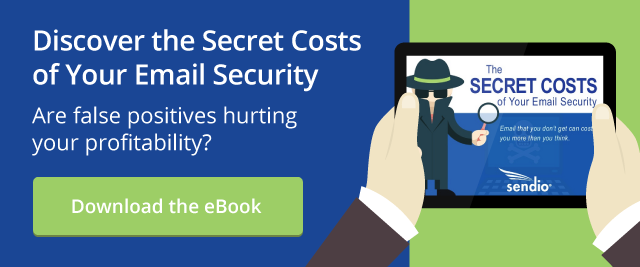The future of email is often a highly-contested topic; some experts go as far as to suggest that email as we know it will become extinct in favor of faster, shorter messaging systems that are more akin to text messaging (which presents its own problems, just as being too informal and disruptive for business use). But for the vast majority of businesses, email is still absolutely vital—and will be for years to come, especially as employees become increasingly mobile. So the question is this: What does hosted email security look like in the future, and how can we better ensure its security so it stays highly relevant and usable?
Spammers and hackers have certainly thrown a wrench in the utility of email today: Businesses of all sizes must continually fine-tune their email security to ensure malicious messages aren’t breaching their network, while also keeping an ear to the ground for false positives that might negatively impact the business or cost time and money.
As spammers become increasingly sophisticated in their efforts, email security needs to respond in kind. Here, we take a look at some of the ways the nature of hosted email security might evolve in the future:
Fining, Outlawing or Overhauling Spam
There’s a general consensus the world over that spam, viruses and hacking are major problems. So instead of filtering malicious email, why not strike it at its source?
Several lawmakers have worked to pass legislation that would enable officials to issue fines for spam—or to outlaw it altogether. Many of these measures, such as a national “no-spam” registry and the banning of fake return email addresses, are obvious steps in the right direction. But figuring out how to fine or otherwise punish spammers under these types of measures can be challenging.
Another lofty idea is to redesign the way email is sent, in an effort to overhaul the entire spam industry. However, re-writing the internet protocol to minimize spam would take years.
Unfortunately, these schemes will likely only experience limited success, especially as hackers and spammers continue to evolve. Instead, email security needs to occur where it hits the end user: in their inbox.
The Centralization of Email Security
As email security has evolved, many businesses have added features in a piece-meal fashion. Today, this means you might be working with several different solutions that are spread throughout your network. Unfortunately, gaps in email security, as well as regulatory problems, can emerge when solutions aren’t centralized.
That’s why the future of email security will see solutions that are increasingly centralized. IT departments are already starting to seek out solutions that incorporate antispam and antivirus, firewall features and more, all from one vendor. The business benefits from secure email solutions that were designed to work in concert, rather than added separately over time.
Layered Email Security
As the centralization trend continues, businesses have the opportunity to benefit from a more layered approach to secure email. By tightly integrating several important security features, your business can eliminate malicious threats and annoying spam campaigns, while also giving individual users the flexibility to manage their inbox the way they want. (Because sometimes users actually want to receive email that many filters would consider spam.)
To benefit from a layered email security solution, look for the following features:
-
Effective SMTP defense: Whitelisting can lead to problems. Instead, seek out email security that will effectively verify any email from a new IP address, but with capabilities that are fully customizable for your business.
-
IP address reputation: In the next layer, the system should leverage pattern matching technology to identify malicious senders and their source IP addresses.
-
Anti-spoofing and anti-virus technology: Rather than using content-based email security, which leads to false positives, consider a sender-verification approach to protect your organization from viruses, identity theft and other schemes.
-
Email community: Here is where customization comes into play. Look for email security that is able to support a community of permitted email senders for each user in your organization.
As the threats to secure email continue to grow, IT has an opportunity to move toward smarter email security by looking to centralized and layered solutions that provide stronger protection and greater user flexibility. With these trends already in the works, the future of secure email looks bright.
Sendio Email Security features innovative layered security features to better protect your business. To find out more about our approach to smart email, click here to get started.
 //
//
